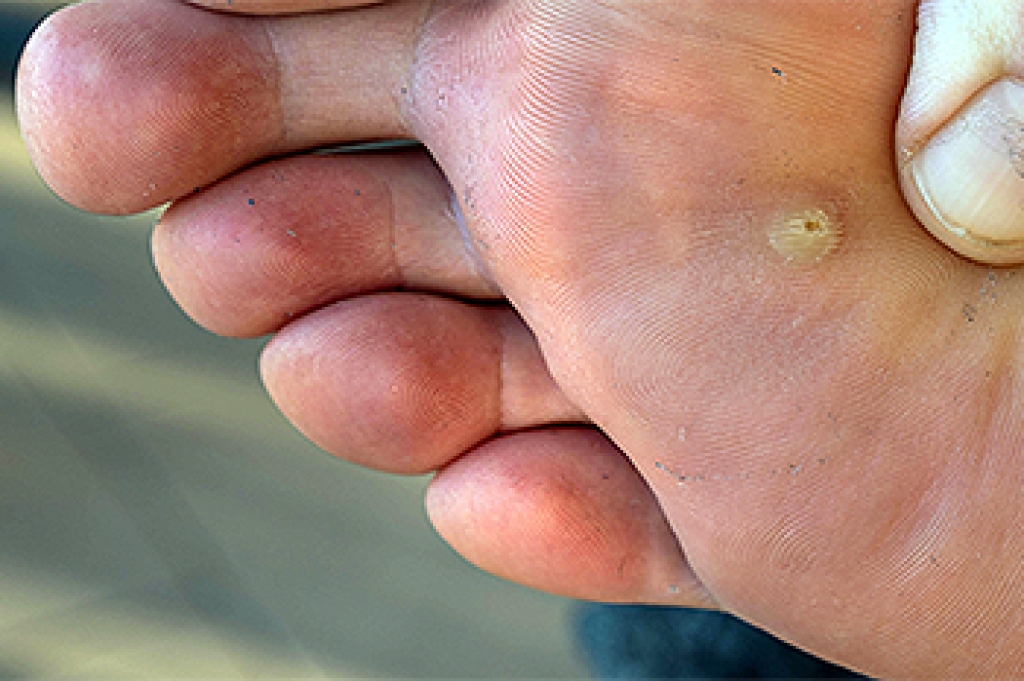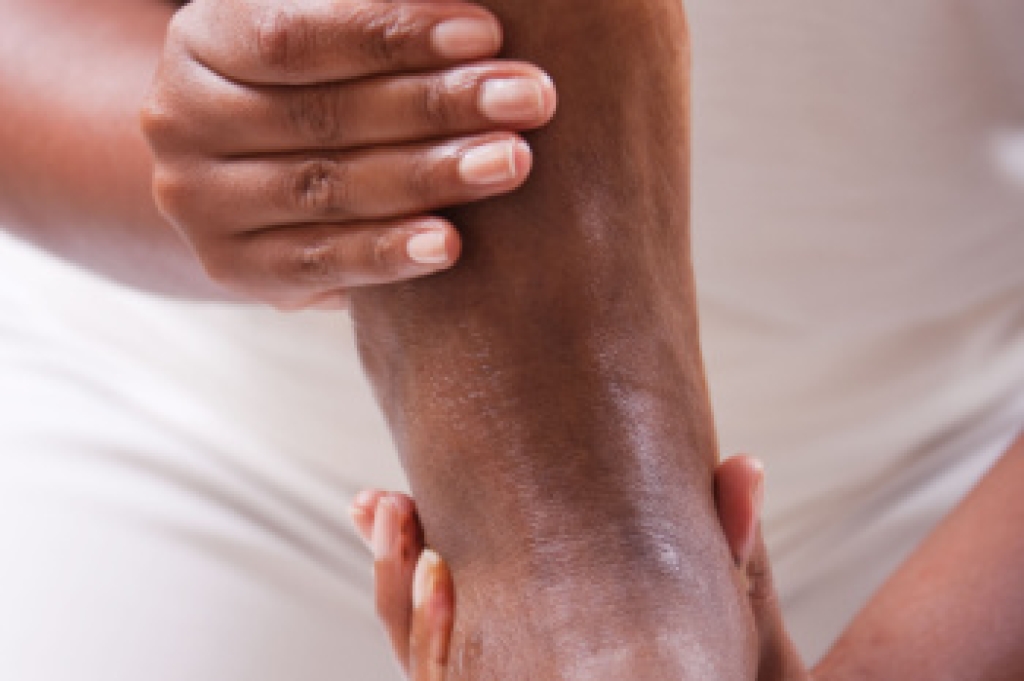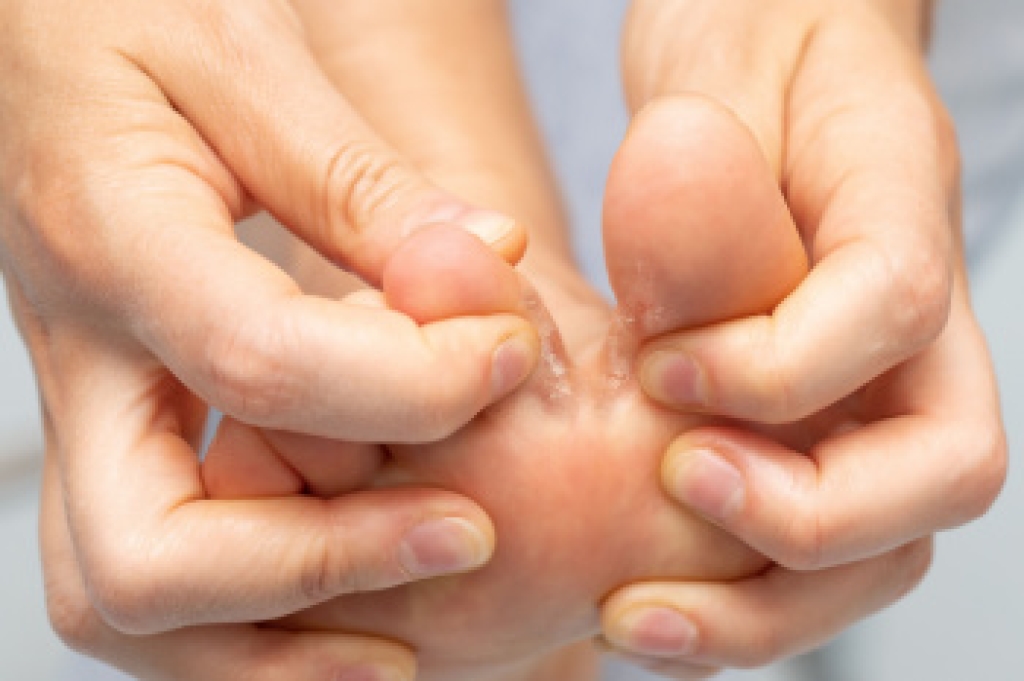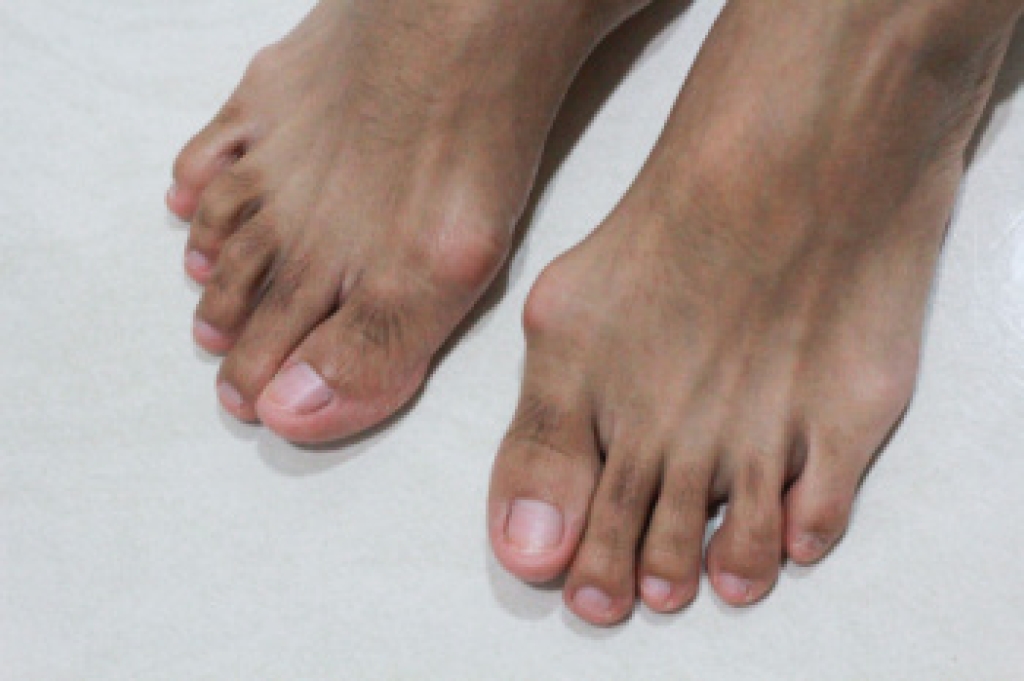
Plantar warts are growths that develop on the bottom of the foot due to a viral infection in the skin. They can become very painful, especially when they form on weight-bearing areas, making standing or walking uncomfortable. These warts are caused by the human papillomavirus, or HPV, which enters the skin through small cuts or weak spots. Symptoms include a rough patch of skin, tiny black dots in the center, and tenderness when pressure is applied. Children and teenagers are most vulnerable because their immune systems are still developing. The virus spreads in warm and moist environments such as locker rooms and pools. Plantar warts can be painful as they grow inward on the sole of the foot as a result of walking and standing. A podiatrist can provide effective treatments that remove discomfort and prevent recurrence. If you have developed a plantar wart, it is suggested that you promptly schedule an appointment with a podiatrist who can offer effective relief and treatment solutions.
Plantar warts can be very uncomfortable. If you need your feet checked, contact Dr. Michael T. Hames from Florence Foot Center. Our doctor will assist you with all of your foot and ankle needs.
About Plantar Warts
Plantar warts are the result of HPV, or human papillomavirus, getting into open wounds on the feet. They are mostly found on the heels or balls of the feet.
While plantar warts are generally harmless, those experiencing excessive pain or those suffering from diabetes or a compromised immune system require immediate medical care. Plantar warts are easily diagnosed, usually through scraping off a bit of rough skin or by getting a biopsy.
Symptoms
- Lesions on the bottom of your feet, usually rough and grainy
- Hard or thick callused spots
- Wart seeds, which are small clotted blood vessels that look like little black spots
- Pain, discomfort, or tenderness of your feet when walking or standing
Treatment
- Freezing
- Electric tool removal
- Laser Treatment
- Topical Creams (prescription only)
- Over-the-counter medications
To help prevent developing plantar warts, avoid walking barefoot over abrasive surfaces that can cause cuts or wounds for HPV to get into. Avoiding direct contact with other warts, as well as not picking or rubbing existing warts, can help prevent the further spread of plantar warts. However, if you think you have developed plantar warts, speak to your podiatrist. He or she can diagnose the warts on your feet and recommend the appropriate treatment options.
If you have any questions, please feel free to contact our office located in Florence, Alabama . We offer the newest diagnostic and treatment technologies for all your foot care needs.




